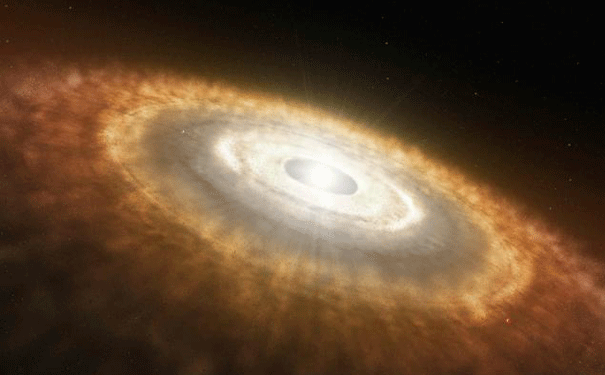
Computer simulations suggest that high-energy radiation from baby stars is likely to create gaps in young solar systems, causing planet pile-ups in certain orbits. Image: NASA/JPL-Caltech.
In young solar systems some orbits are more popular than others. Such behaviour results in planet pile-ups and deserts.
The high-energy radiation from baby sun-like stars may be the force that carves gaps in protoplanetary disks, the clouds of gas and dust that swirl around young stars and provide the raw materials for planets. These gaps then act as barricades, corralling the planets into certain orbits.
The new computer simulations revealed that giant planets migrate inward before they finally settle into a stable orbit around their star. But once it encounters a gap cleared by photo-evaporation, it either stops right before or behind the gap, creating a pile-up.
This localised concentration of planets leaves behind regions that are devoid of any planets. According to Ilaria Pascucci, from the University of Arizona’s Lunar and Planetary Laboratory, this uneven distribution is exactly what is observed in many newly discovered solar systems.
“Our results show that the final distribution of planets does not vary smoothly with distance from the star, but instead has clear ‘deserts’ — deficits of planets — and ‘pile-ups’ of planets at particular locations,” he said.
Source Eureka Alert






